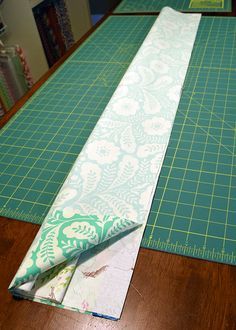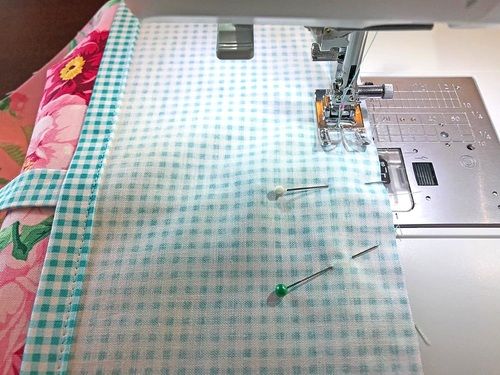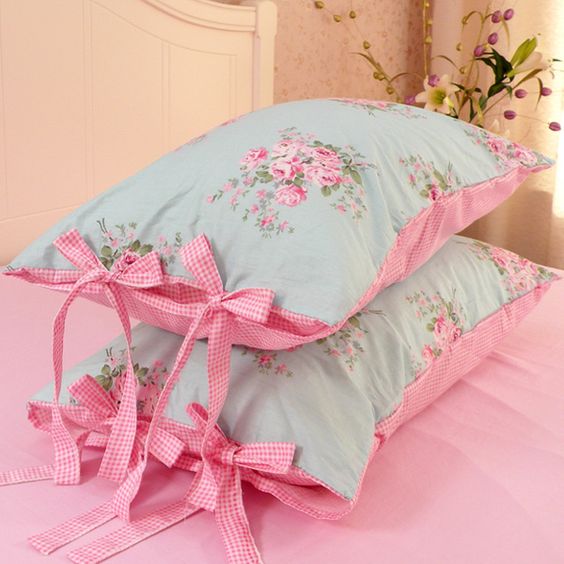Last Updated on December 13, 2025 by Wahid

When you buy new sheets, duvet covers, and pillowcases, you can instantly transform a room, making it feel fresh and new.
Are you planning to make some new bed linens and wondering how much fabric for a pillowcase you need? Look no further. Without the hassle of redecorating, you can instantly upgrade your bedroom. Beginners will find bed linen projects easy since the patterns are straightforward. Depending on your sewing skills, you may be able to make a pillowcase using only an existing pillowcase template.
By following this post, you will learn how to calculate how much fabric you need for pillowcases. Cut out the hassle of calculating pillowcase sizes, and let us do the work for you.
Supplies You Will Need For Making Pillowcases

- Fabric (depending on how many pillowcases you’re making)
- Throw pillows
- Fabric chalk or crayon
- Measuring tape
- Straight pins
- Velcro strips
- Scissors
- Iron
- Sewing machine
- Fabric glue
- Needle & thread
How Big Or Small Size Of Pillowcase Can Be?
| Pillow Size | Measurements (Inches) | Measurements (CM) |
| King: | 20 inches X 36 inches | 51 CM X 92 CM |
| Queen: | 20 inches X 30 inches | 51 CM X 76 CM |
| Standard: | 20 inches X 26 inches | 51 CM X 56 CM |
| Body: | 20 inches X 54 inches | 51 CM X 137 CM |
How To Choose The Right Pillowcase Size

For “Standard” And “Queen” Size Pillowcases
- Front:– 21 2/8″ x 37 6/8″
- Back:– 21 2/8″ x 31″
“King“ size pillowcase
- Front:– 21 2/8″ x 48″
- Back:– 21 2/8″ x 41 2/8″
The front & back fabrics can be contrasting or have the same pattern and color.
Once that’s done, you’re ready to start sewing.
Making Pillowcases: How To Take Measures Of Fabric?

When you’re making a pillowcase, you need to measure the pillow first. By doing this, you’ll know how much fabric you’ll need.
The following steps will help you measure the material to make pillow covers:
Step 1:
If you want your pillow to be fluffy and evenly filled, make sure it is filled evenly.
Step 2:
After that, take note of your pillow’s total length and width.
Step 3:
If you have a measuring device or some other device, hold it. Underneath the pillow, go. Finally, loosely wrap it in both directions.
Step 4:
To calculate the fabric requirements for 1 side, multiply the whole measurement by 2. Therefore, you get both top and back measurements.
Step 5:
To accommodate seam allowances, multiply the total dimensions by one inch. Therefore, both sides are an inch longer.
That’s all! Suppose you prefer your result in yards; we’ll add another step. To calculate the figure, simply divide it by 36. Lastly, you receive the yardage that you need.
Some Pro Tips
- Don’t forget to measure both sides simultaneously.
- You should make sure that the tape measure is snugged up at the right point but not too tight or too loose.
- Your pillow cover will become shorter if you hold it too tightly.
- It will be baggy and unfitting if the measurement is too loose.
Do I Need A Lot of Fabric To Make A Pillowcase?

- In the case of a “standard pillow,” it measures 26 inches long and 20 inches wide.
- However, when you’re stitching a pillow cover, pillow size does not matter. Instead, double the amount of fabric is needed.
- Accordingly, a pillow should have a width of roughly 22.5 inches and a length of about 31.5 inches.
- Fill depth & seaming will be adjusted. However, make sure to leave 4 inches available for hemming.
- Thus, 1 yard of cloth with a 45-inch width works best for pillow covers of standard size. To achieve this, you must wash and dry your cloth before shrinking.
- Let the preshrinking part slip if necessary. Take about 2 inches more fabric.
- If you choose a different pillow cover dimension, then the amount of fabric will vary.
- Let’s stay safe, whatever the size of your pillowcase.
- When your fabric is 45 inches wide, you’ll need between ¾ & 1-½ yards for a pillowcase.
For 2 Pillowcases, How Many Yards Of Fabric Are Needed?

- Knowing how many yards you will need to make 1 pillowcase, it is easy to find the amount for 2 pillowcases. It’s still confusing, isn’t it?
- In order to make 2 pillow covers, 1.5 yards to 3 yards of fabric are needed.
- Your pillow’s size will determine the exact yardage.
- As an example, consider your king-sized pillow.
- Hence, the recommended amount of fabric for sewing king-size pillowcases is 2.5 yards.
- In the case of a standard pillow, approximately 2 yards would be sufficient.
- Also, a queen-sized pillow cover should be used.
- Be sure to purchase 10% more fabric than you need.
- Thus, any shrinkage or incorrect cutting won’t cost you even an inch of material.
Make A Pillowcase: How To Do It

An important note: Measurements below indicate a standard pillowcase size. In the case where you are making a queen or king-size pillowcase instead, you will need to adjust the measurements slightly.
In step one, you will find suggestions for measuring pillowcases of different sizes.
Step 1: Fabric Cutting

- Cut two identical-sized pieces of fabric, each 21 inches wide and 29.5″ long.
- When complete, the pillowcase will measure 20 x 26 inches.
- Alternatively, if you wish to make a pillowcase for a Queen instead, you will need two fabric pieces that measure 33.5 inches by 21 inches.
- In order to make King size pillowcase, 2 pieces measuring 39.5” long and 21” wide are needed.
Step 2: Iron, Pin, & Sew Your Fabric

- To make the seam on the outer edges, fold over the fabric by 3.5 inches (from the long side, nearest the opening).
- To keep it in place, iron down and pin the folded part.
- That fabric’s bottom edge should be sewn together. Faux cuffs will be created, just like french seams.
Step 3: Similarly, The Second Fabric Piece Should Be Repeated In Step 2

Step 4: Attach The Pieces By Pinning & Sewing

- Once the two fabric pieces are right sides together, align the cuffs created in steps 2 & 3. Pillows are opened on the side of the cuffs.
- Using straight pins, pin together the remaining 3 sides ( keeping the cuff open ).
- However, stitch straight lines around the pillowcase’s three aiming sides.
Step 5: Turn The Pillowcase Over On Its Side

- Then you’re done! Having learned how to sew a pillowcase, you can make one of your own.
- Your bedding will likely be changed frequently like mine, right?
- You’ll have a great time.
Tips For Sewing DIY Pillowcases
Creating a great-looking pillowcase doesn’t require much time – even for a beginner. There are most often envelope flaps on pillowcases, so let’s start with this. You’ll also learn how to make “French seams” to avoid raw edges. However, different styles of pillowcases require specialist instructions.
Here’s What You Need To Do:

- Make sure the right sides of both fabric pieces are facing each other.
- The envelope flap should be longer than the other pieces.
- Turn the short side hems over from the back by 2/8″ & 3/8″ respectively.
- The iron & pin are in place.
- The smaller piece’s short hem should be done the same way.
- Folded edges are sewn together to form a seam.
- Assemble the pieces by stacking them right sides together.
- Under the other piece of fabric, fold the overhanging envelope flap in.
- Make sure all 3 edges of the flap are pinned, folding the flap inward.
- Together, sew the two pieces, leaving a seam allowance of 2/8″.
- Keep the flap side open. Don’t sew it up.
- Leave a hem of 1/8″ over the excess seam.
- Then turn it inside out.
- Turn the flap over and unfold it.
- Leave the flap side unstitched and iron all 3 sides.
- Hem the fabric with 3/8 inch stitching.
- Flip the right side over.
- It’s done! Your pillow is ready to be inserted.
Final Thoughts

How much fabric for a pillowcase? Obviously, after reading our article, you now know everything. Whether it’s a “king size” or a “queen size” pillow, the traveling or Burrito pillow, for your kids or yourself as well.
Basically, sewing is both an art & fun. There’s nothing more exciting than making one’s own beautiful and fitted pillow cover. Having an oversized pillowcase isn’t a good idea either. Similarly, a pillow cover that is too small and tight can cause discomfort.
You can start making a pillowcase right now if you purchase just the right quantity of fabric.


